Description
Biology The Essentials
Biology The Essentials Hoefnagels
Biology The Essentials Hoefnagels 1st
Biology The Essentials Hoefnagels 1st Test Bank
Test Bank for Biology The Essentials, 1st Edition : Hoefnagels Download
***THIS IS NOT THE ACTUAL BOOK. YOU ARE BUYING the Test Bank in e-version of the following book***
Name: Biology The Essentials
Author: Hoefnagels
Edition: 1st
ISBN-10: 0078096928
ISBN-13: 978-0078096921
Type: Test Bank
– The test bank is what most professors use an a reference when making exams for their students, which means there’s a very high chance that you will see a very similar, if not exact the exact, question in the test!
– The file is either in pdf, doc, rtf or zipped in the package and can easily be read on PCs and Macs.
– Delivery is INSTANT. You can download the files IMMEDIATELY once payment is done.
We also faced similar difficulities when we were students, and we understand how you feel.
But now, with the Biology The Essentials 1st Test Bank, you will be able to
* Anticipate the type of the questions that will appear in your exam.
* Reduces the hassle and stress of your student life.
* Improve your studying and also get a better grade!
* Get prepared for examination questions.
* Can save you time and help you understand the material.
This is the quality of service we are providing and we hope to be your helper.
Delivery is in the next moment. Test Bank is accurate.
Prepare to receive your Biology The Essentials 1st Test Bank in the next moment.
ISBN-10: 0078096928
ISBN-13: 978-0078096921
If you have any questions, or would like a receive a sample chapter before your purchase, please contact us at inquiry@testbankcorp.com
Biology The Essentials
Biology The Essentials Hoefnagels
Biology The Essentials Hoefnagels 1st
Biology The Essentials Hoefnagels 1st Test Bank
Test Bank for Biology The Essentials, 1st Edition : Hoefnagels Download
1. What does a pine tree, an octopus, and a bacterium have in common at the microscopic level?
A. nothing in common
B. nuclei
C. blood supply
D. cancerous tissues
E. cellular composition
2. The scientist(s) given credit for first using the term “cell” to describe the basic unit of life is (are)
A. Mathias Schleiden and Theodore Schwann.
B. Robert Hooke.
C. Carl Woese.
D. Rudolf Virchow.
E. J. Craig Venter.
3. Why are cells called “the fundamental unit of life”?
A. All known organisms have one or more cells.
B. Earliest life on Earth is hypothesized to have been single-celled.
C. Some cells are separate living entities that can survive individually.
D. Cells are the smallest unit of life that can function independently.
E. All of the choices are correct.
4. The scientist (scientists) given credit for formulating the “cell theory” is (are)
A. Robert Hooke.
B. Carl Woese.
C. J. Craig Venter.
D. Mathias Schleiden and Theodore Schwann.
E. Antony van Leeuwenhoek.
5. Which component of the cell theory argues against life on Earth evolving from inorganic molecules?
A. All organisms are made of one or more cells.
B. The cell is the fundamental unit of all life.
C. All cells come from preexisting cells.
D. Cells are small in size.
E. All cells are either prokaryotic or eukaryotic.
6. The scientist (scientists) given credit for adding the third tenet (all cells come from preexisting cells) to
the cell theory is (are)
A. Robert Hooke.
B. Mathias Schleiden and Theodore Schwann.
C. Rudolf Virchow.
D. Carl Woese.
E. J. Craig Venter.7. The original three tenets of the cell theory are that
A. all organisms have DNA, DNA is the fundamental unit of life, and all cells come from preexisting
cells.
B. all organisms are made of one or more cells, the cell is the fundamental unit of life, and all cells come
from preexisting cells.
C. all organisms have DNA, all organisms are made of cells, and all cells produce proteins.
D. all organisms are made of one or more cells, the cell is the fundamental unit of life, and all cells have a
nucleus.
E. all organisms are made of one or more cells, all cells contain DNA, and all cells come from preexisting
cells.
8. How do cells avoid surface area limitations?
A. all of the choices
B. flattened shape
C. long and thin shape
D. transportation system that circulates materials inside the cell
E. many microscopic extensions
9. The primary structural component of a cell membrane is
A. a cholesterol molecule.
B. a protein molecule.
C. a phospholipid molecule.
D. an enzyme.
E. a sugar molecule attached to a protein.
10. A phospholipid molecule
A. has a hydrophilic head that is repelled by water.
B. has hydrophilic tails that are repelled by water.
C. has a hydrophilic head that is attracted to water.
D. has a hydrophobic head that is repelled by water.
E. has hydrophobic tails that are attracted to water.
11. A cell membrane is not
A. a fluid structure.
B. a rigid structure.
C. a mosaic structure.
D. a bilayered structure.
E. composed of phospholipid molecules.
12. The phospholipid bilayer of membranes allows lipids and small, nonpolar molecules to pass across
membranes, but prohibits the passage of ions and polar molecules. This occurs because the phospholipid
tails are
A. always saturated.
B. hydrophilic and hydrophobic.
C. always unsaturated.
D. hydrophilic and selectively permeable.
E. hydrophobic and selectively permeable.
13. A eukaryotic cell
A. has a cell wall with peptidoglycan.
B. is usually smaller than a prokaryotic cell.
C. does not have membrane-bound organelles.
D. has membrane-bound organelles.
E. does not usually have a nucleus.14. The three domains in the Woese system of classification are
A. Bacteria, Animalia, and Plantae.
B. Fungi, Protista, and Animalia.
C. Archaea, Eukarya, and Protista.
D. Monera, Bacteria, and Eukarya.
E. Archaea, Bacteria, and Eukarya.
15. Which of the following is NOT a beneficial ecological role of members of the domain Bacteria?
A. aid in digestion
B. decomposers
C. producers
D. pharmaceutical production
E. cause mitochondrial diseases
16. The cell wall of bacteria
A. helps prevent the cell from bursting.
B. protects the cell.
C. All answers are correct.
D. contains peptidoglycan.
E. gives the bacterium a distinctive shape.
17. Penicillin halts bacterial infections
A. by stimulating a person’s immune system.
B. by damaging the cell membrane.
C. by interfering with the construction of the cell wall.
D. by causing the DNA of a bacterium to mutate.
E. All answers are correct.
18. What type of membrane protein is involved in creating anchoring junctions between animal cells?
A. transport proteins
B. enzymes
C. recognition proteins
D. adhesion proteins
E. receptor proteins
19. What type of membrane protein is involved in passing ions and polar molecules across membranes?
A. transport proteins
B. enzymes
C. recognition proteins
D. adhesion proteins
E. receptor proteins
20. The theory of endosymbiosis is based on
A. the knowledge that ribosomes are structures found in bacteria, plants, and animals.
B. the experiments in which bacteria were grown in plant cells and formed chloroplasts.
C. the knowledge that chloroplasts and mitochondria resemble bacteria.
D. evidence from the fossil record.
E. similarities between chloroplasts and other organelles in animals.
21. An organelle found in plant cells and some members of the kingdom Protista, but not in animal cells, is
A. a centriole.
B. a ribosome.
C. a cell membrane.
D. a lysosome.
E. a chloroplast.22. The most prominent organelle in most eukaryotic cells is the
A. endoplasmic reticulum.
B. nucleus.
C. ribosome.
D. nucleolus.
E. cell membrane.
23. The function of the nucleolus is
A. protein synthesis.
B. photosynthesis.
C. transport of material into and out of the nucleus.
D. assembly of components of ribosomes.
E. assembly of DNA.
24. The function not done in either the rough or smooth endoplasmic reticulum is to
A. produce proteins.
B. produce lipids.
C. detoxify poisons.
D. produce DNA.
E. form vesicles for transport to the Golgi apparatus.
25. The Golgi apparatus is characterized by all of the following except that it is not
A. an organelle.
B. a processing center.
C. studded with ribosomes.
D. a stack of membrane enclosed sacs.
E. involved with secretion of cellular components.
26. The main organelles and structures involved with milk production and secretion in their correct sequence
are:
A. nucleus, nuclear pore, rough ER, smooth ER, transport vesicle, Golgi body, and vesicle for secretion.
B. nucleus, smooth ER, rough ER, nuclear pore, transport vesicle, Golgi body, and vesicle for secretion.
C. nucleus, transport vesicle, rough ER, smooth ER, Golgi body, and vesicle for secretion.
D. nucleus, nuclear pore, Golgi body, rough ER, transport vesicle, smooth ER, and vesicle for secretion.
E. None of the answers are correct.
27. Which of the following are cellular digestion centers?
A. peroxisomes and ribosomes
B. lysosomes and peroxisomes
C. ribosomes and chloroplasts
D. chloroplasts and ribosomes
E. lysosomes and Golgi apparatus
28. Chloroplasts are known for all of the following except being
A. glucose factories.
B. responsible for respiration.
C. found in plants.
D. organelles that carry out photosynthesis.
E. found in some protists.
29. Mitochondria are known for all of the following except that they do not
A. have their own DNA.
B. extract energy from food.
C. have two membranes.
D. have cristae.
E. carry out photosynthesis.

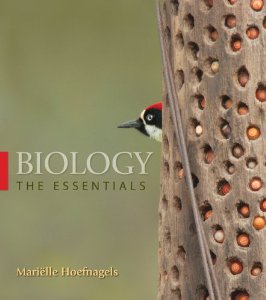
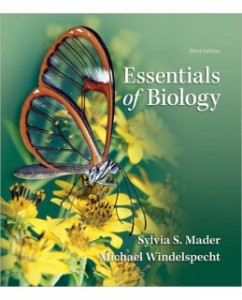
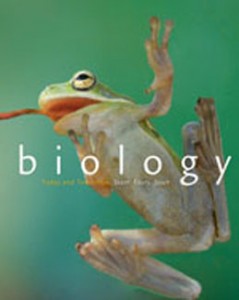
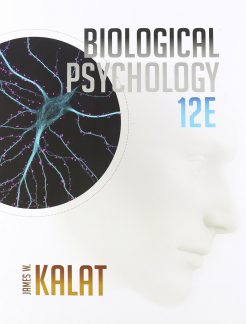
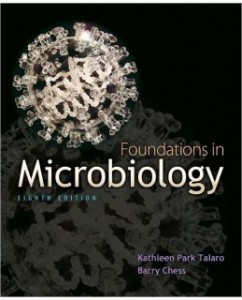

Reviews
There are no reviews yet.